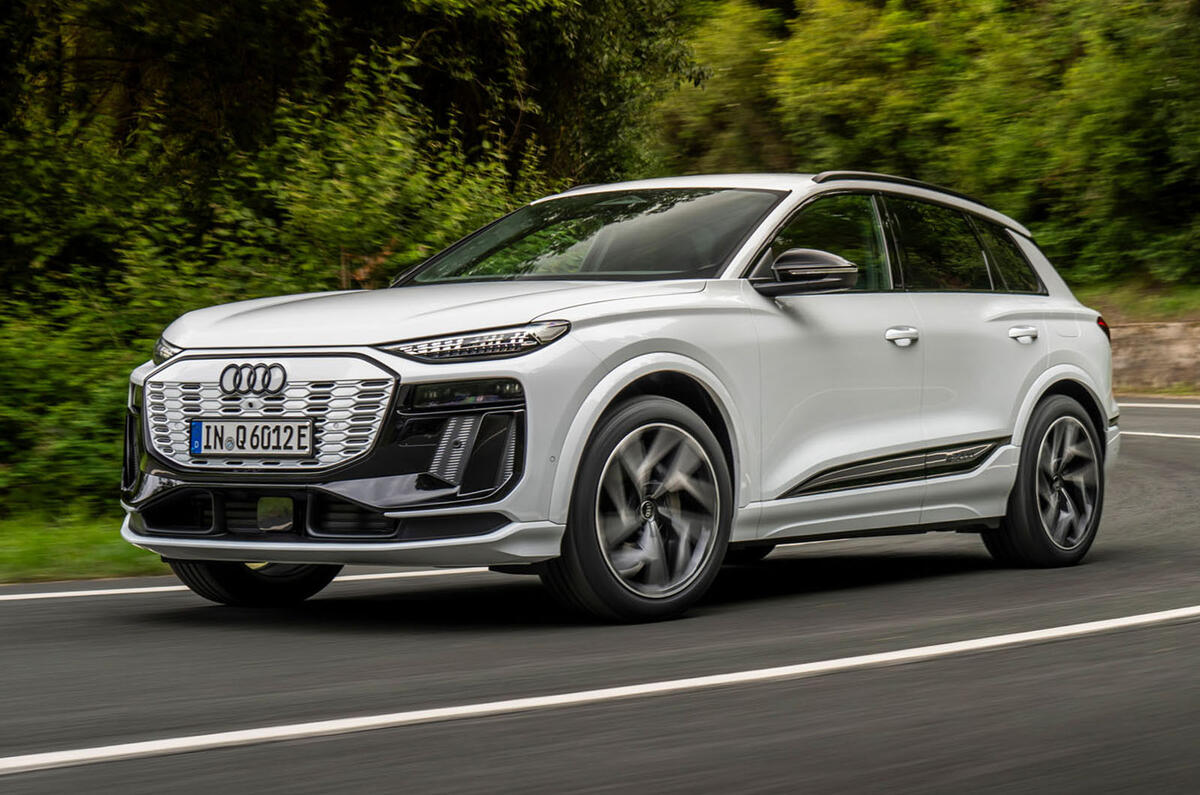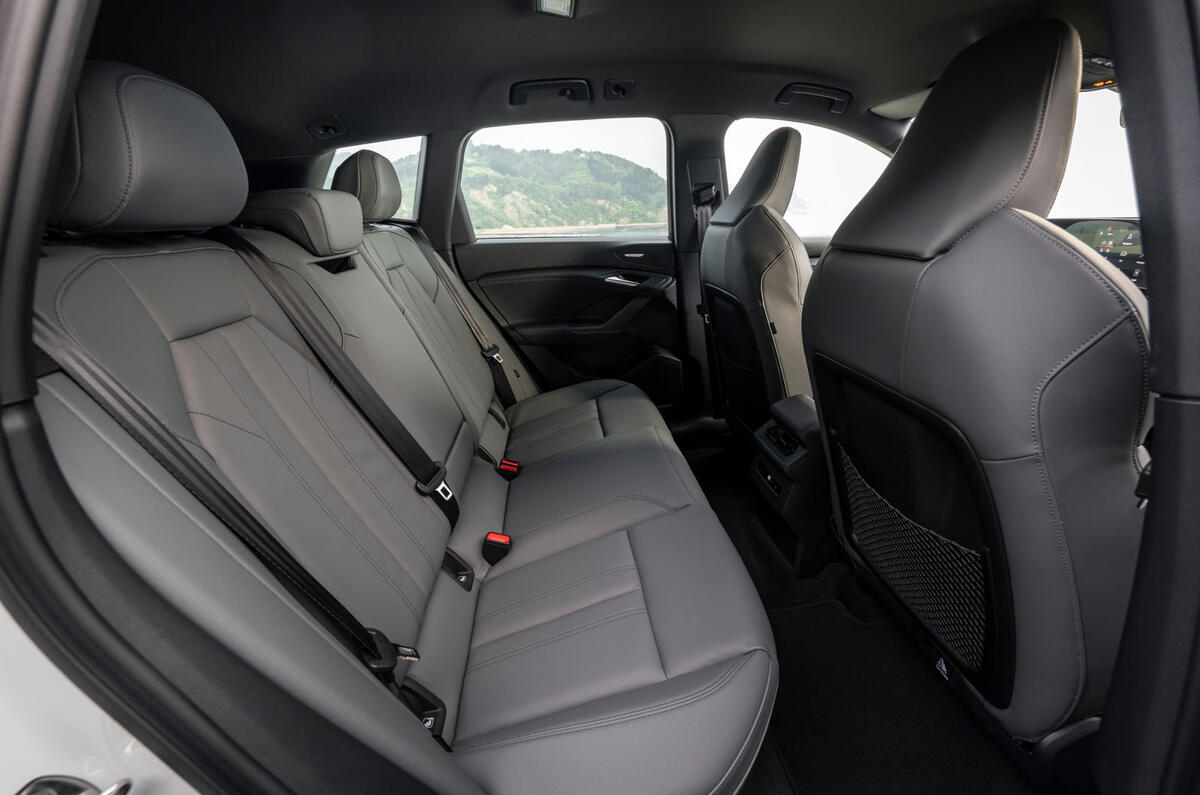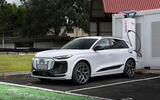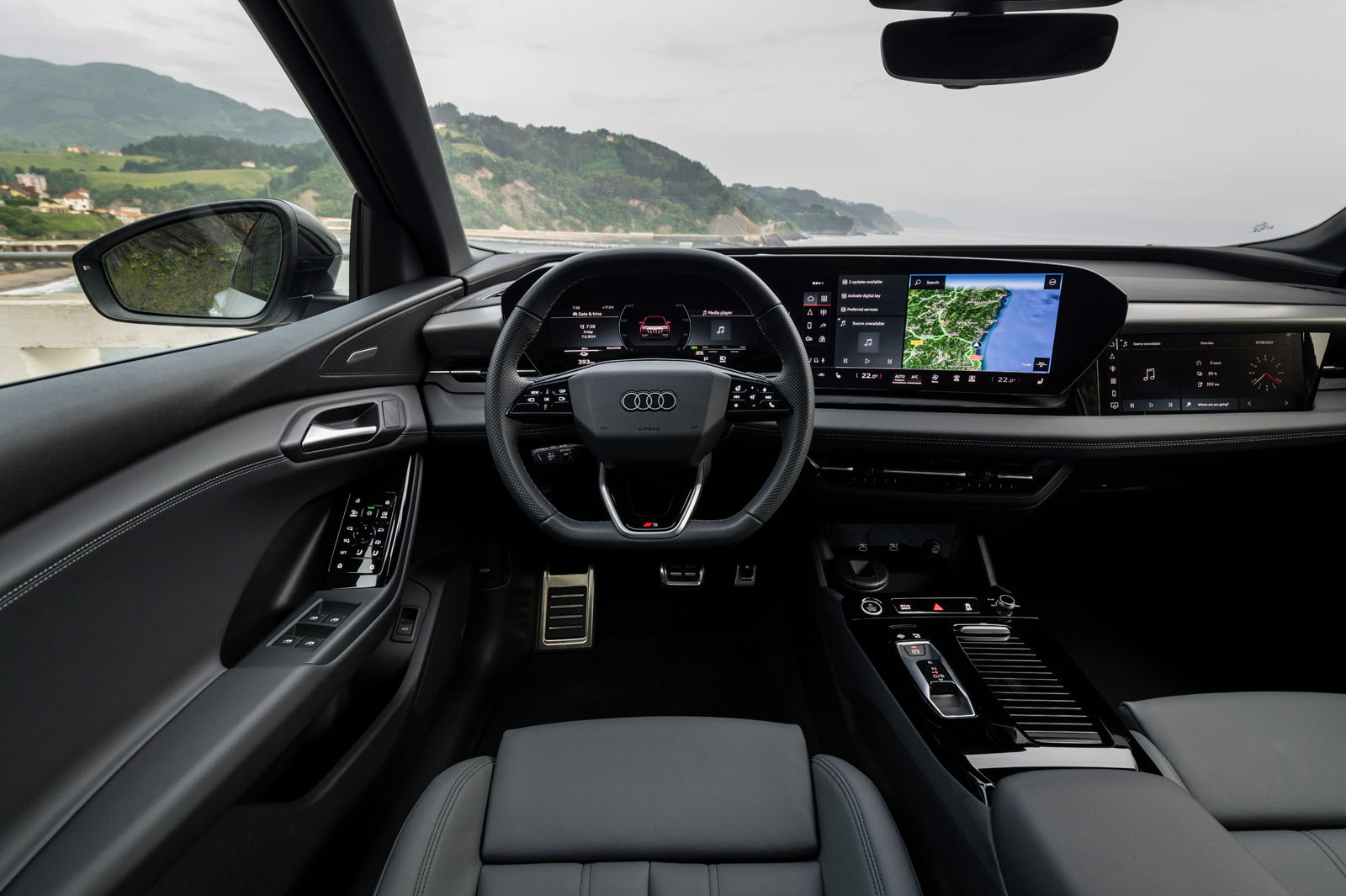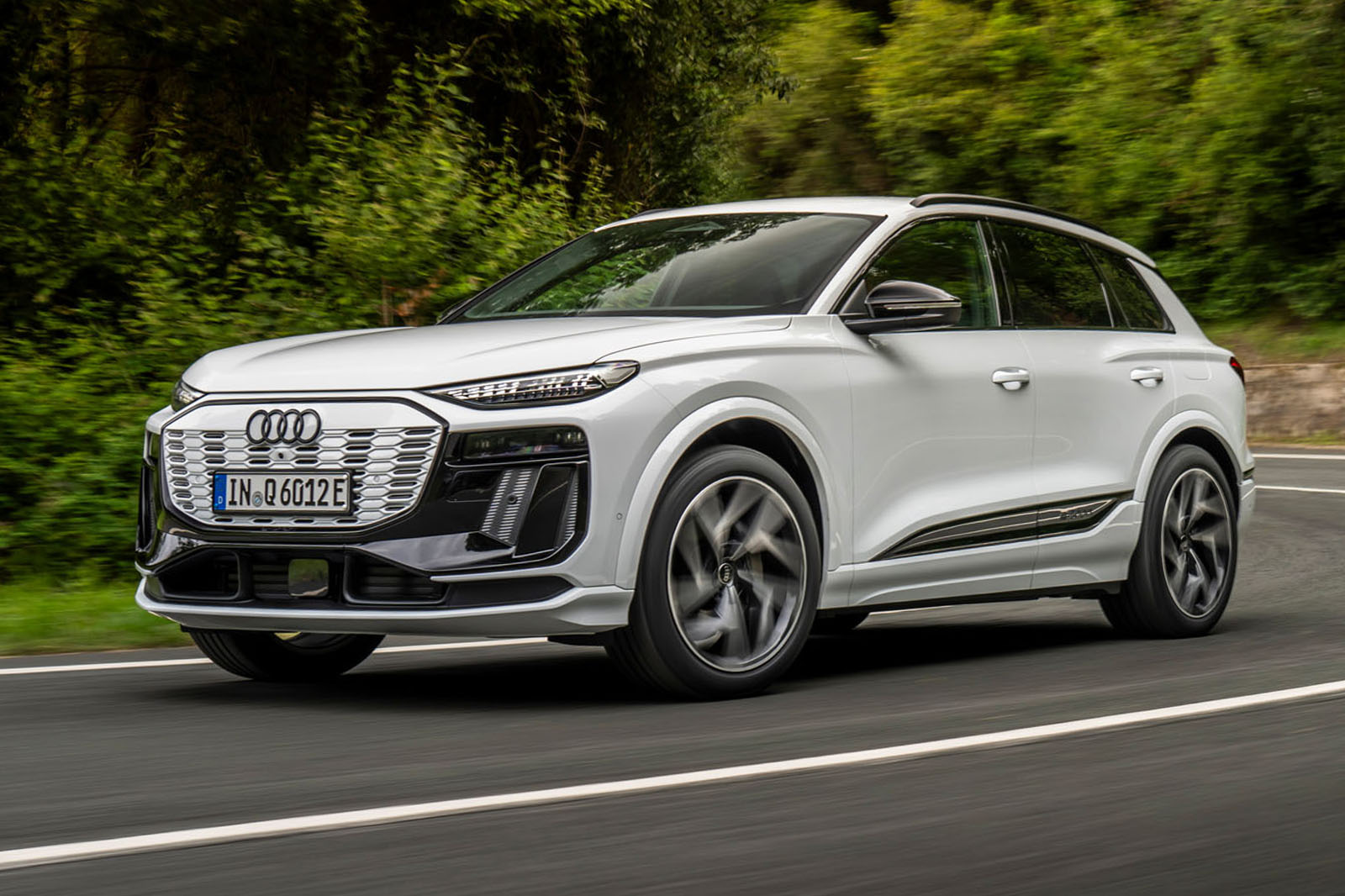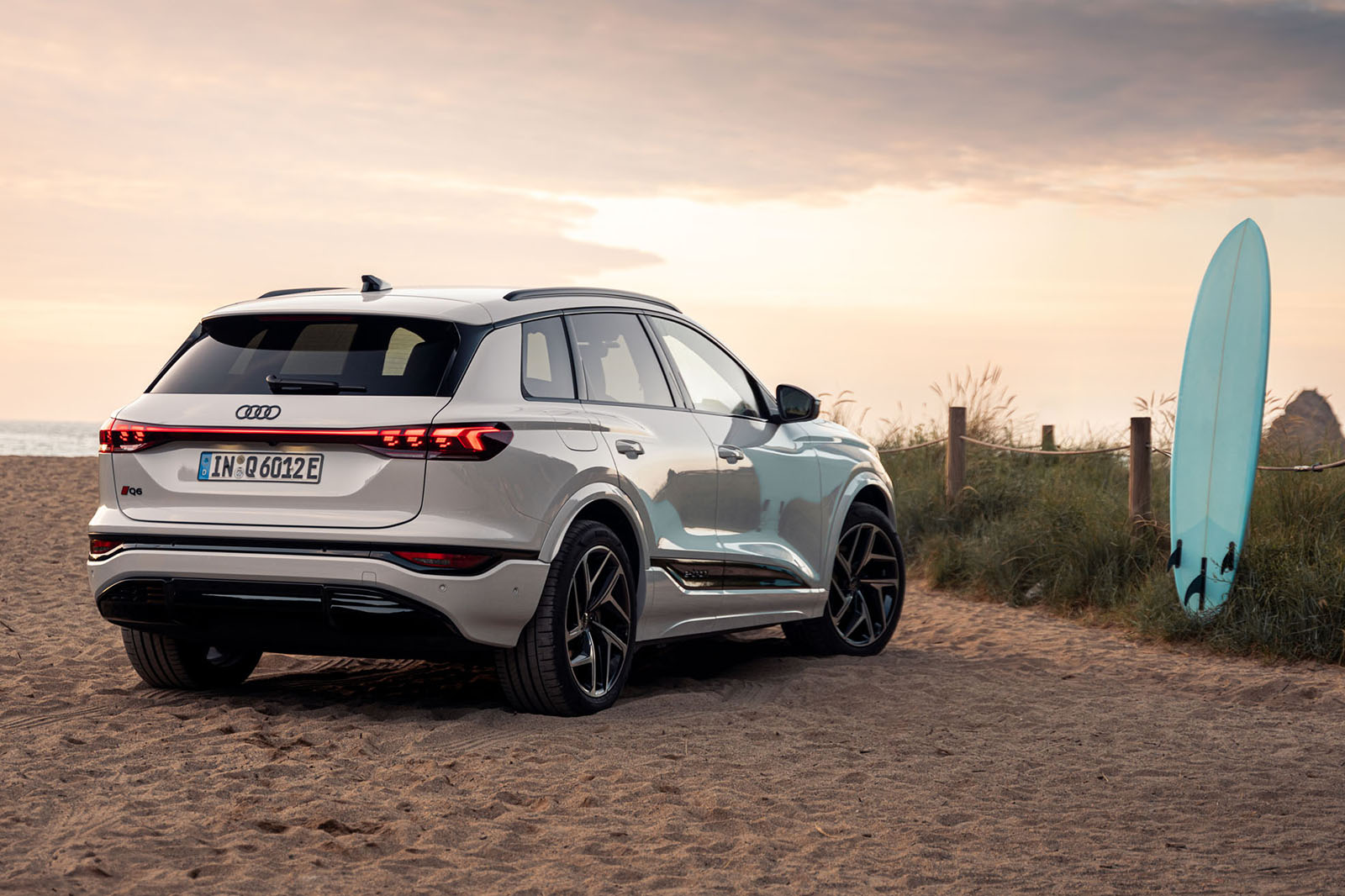Ingolstadt may well want to tap up Guinness for its famous advertising slogan, because its new Audi Q6 E-tron is very good. But we have had to wait.
I’m speaking comparatively here. The Q6 E-tron is the first car on sale to use the fancy PPE platform that Audi has developed with Porsche.
PPE has been conceived specifically for electric cars of the ‘premium’ variety, and so – at least initially – will not be used by cars from the more volume-oriented Volkswagen Group brands (Volkswagen, Skoda, Cupra and Seat).
It has been in the works for six years – an age in the eyes of Chinese car firms, which typically develop new EVs in less than two years.
Alongside the Porsche Macan Electric, the Q6 occupies an interesting niche. The market for premium, mid-sized, electric SUVs seems like it’s well catered for, yet when you dive into it, you see that the Volkswagen Group cousins inhabit their own space.
The Kia EV6 and Hyundai Ioniq 5 aren’t quite premium enough for fussy Brits, the BMW iX3 and Jaguar I-Pace are on their last legs and the Mercedes-Benz EQE SUV is more large than medium.
Audi is also offering up a hot version called the SQ6 E-tron. Audi won't thank me for telling you this, but it feels more like a trim level than a stand-alone model.
The hot electric SUV uses the same dual-motor, four-wheel-drive powertrain as the regular Q6 E-tron but the power is turned up to 510bhp (in overboost mode), and while in the UK the SQ6 will be available exclusively on adaptive air suspension, that won't be the case on the continent.



